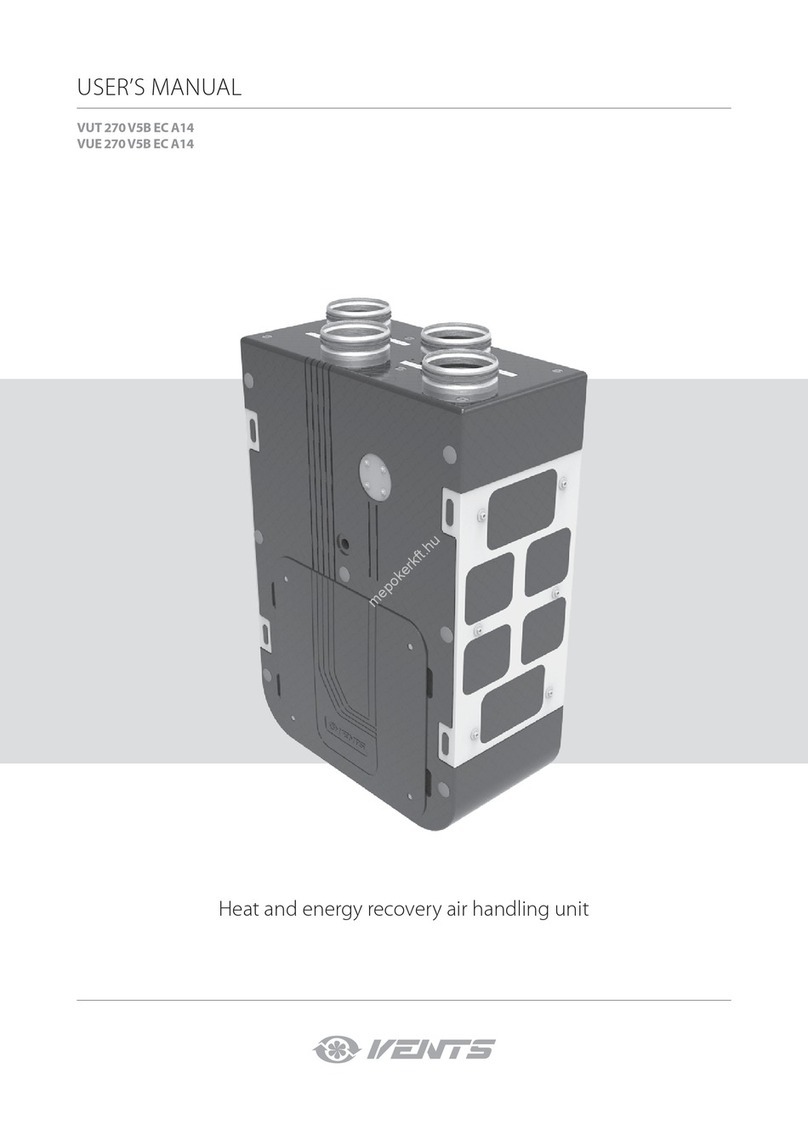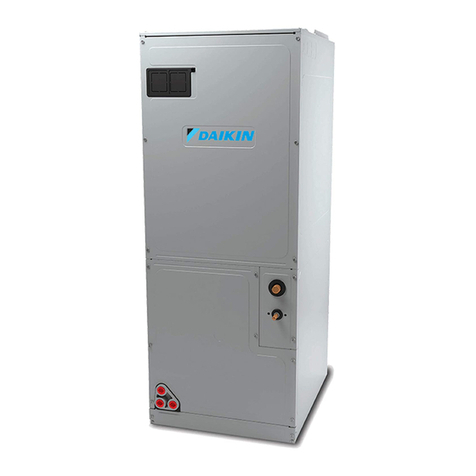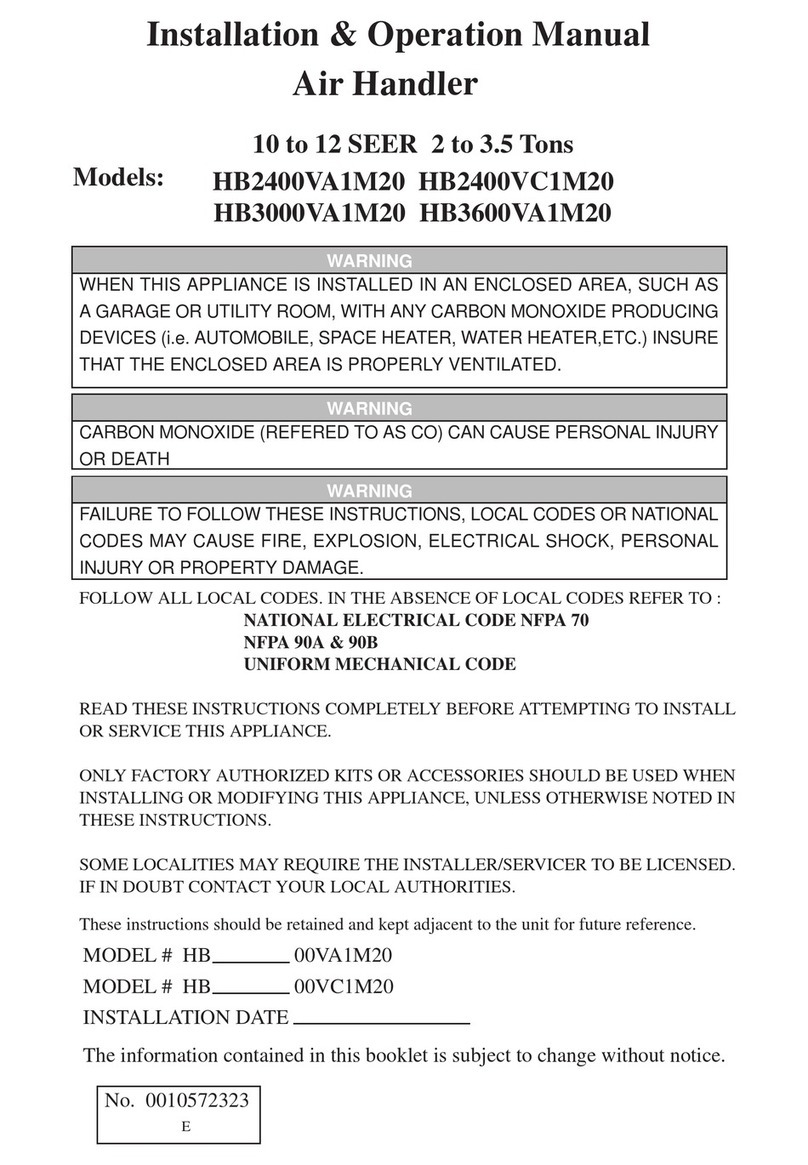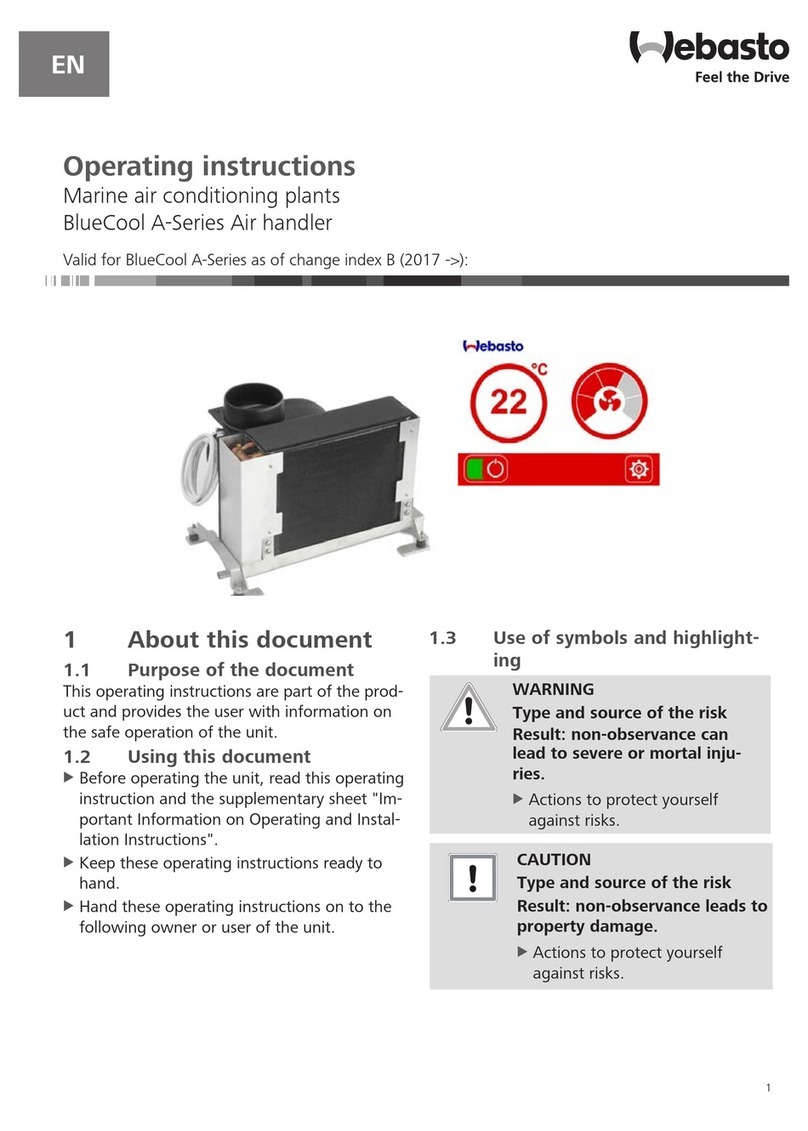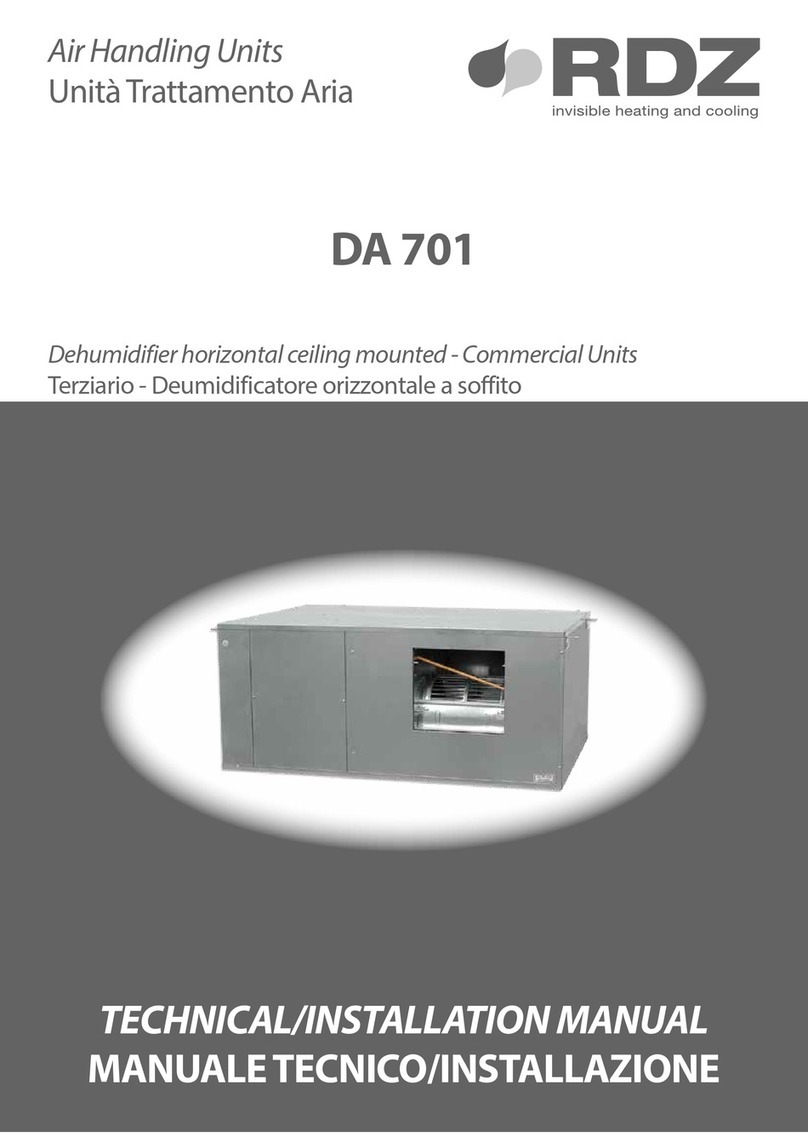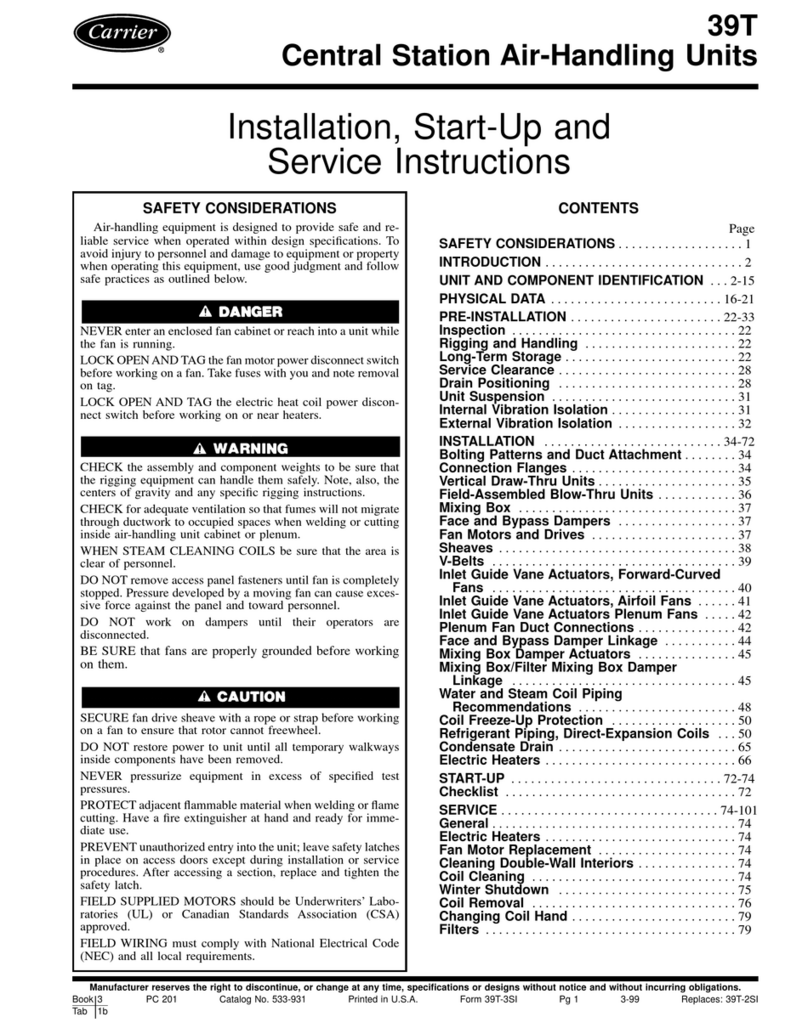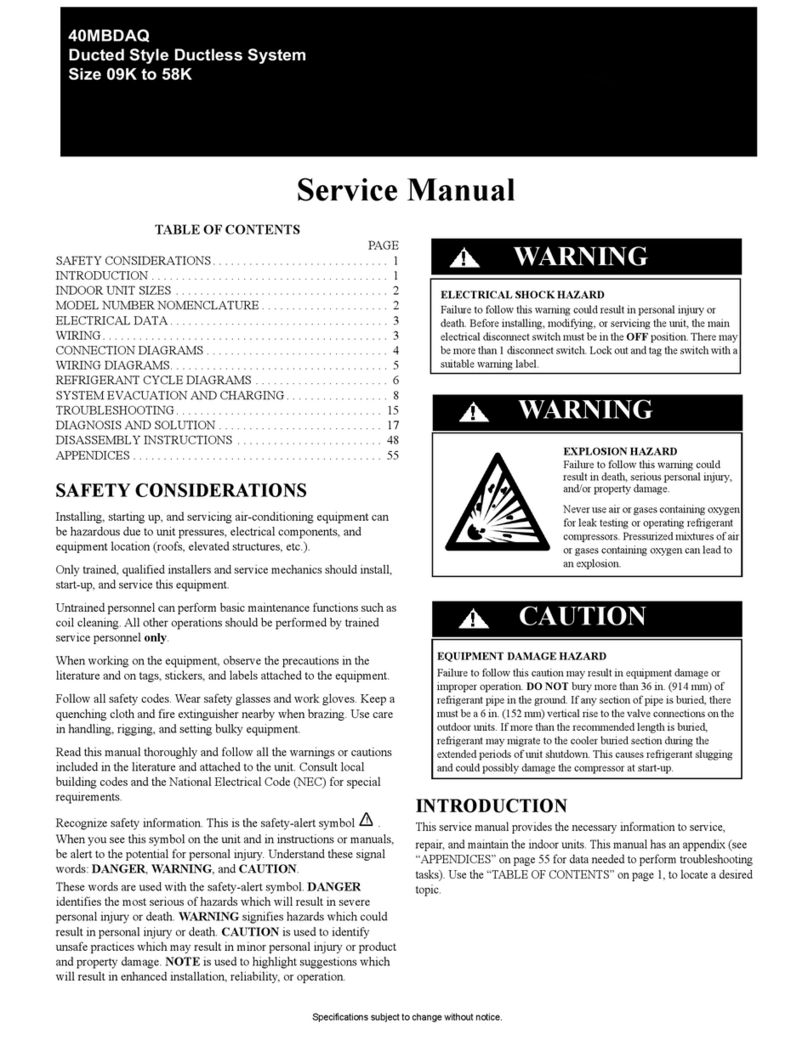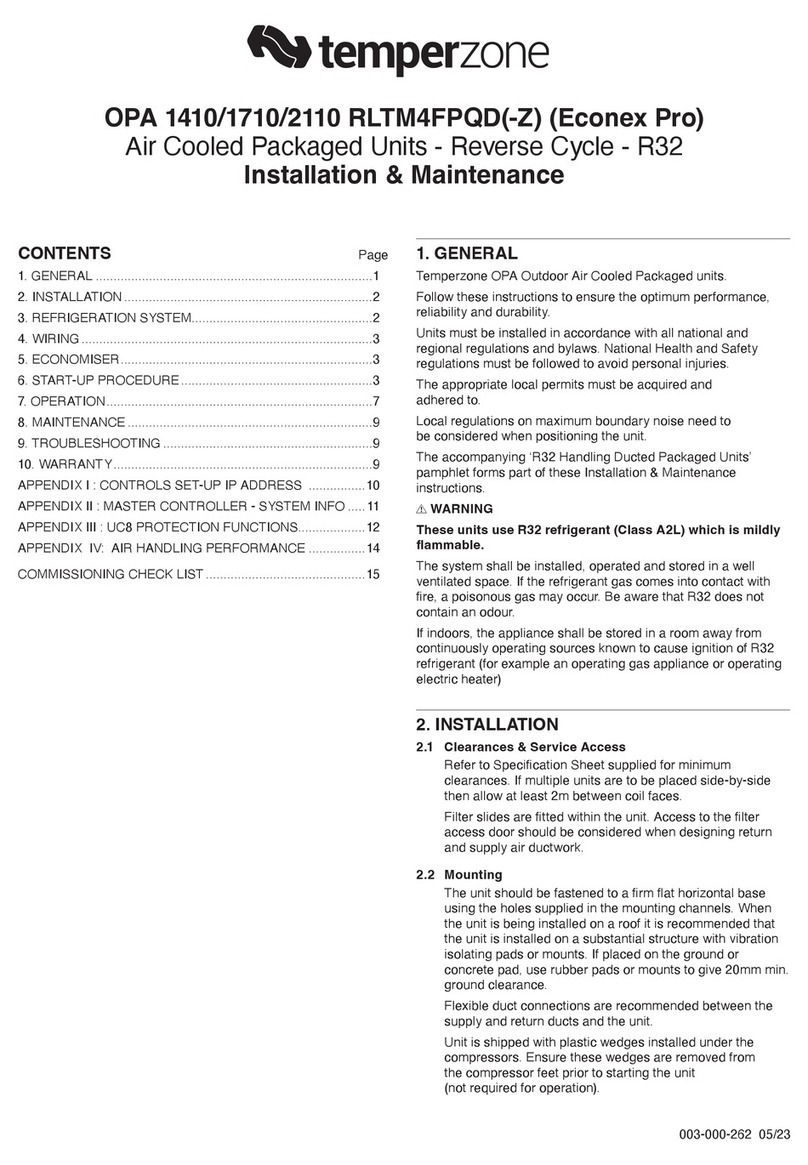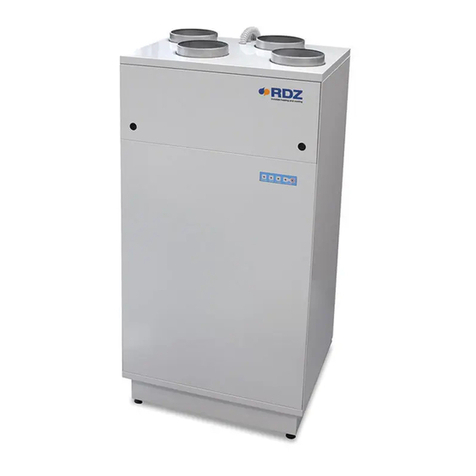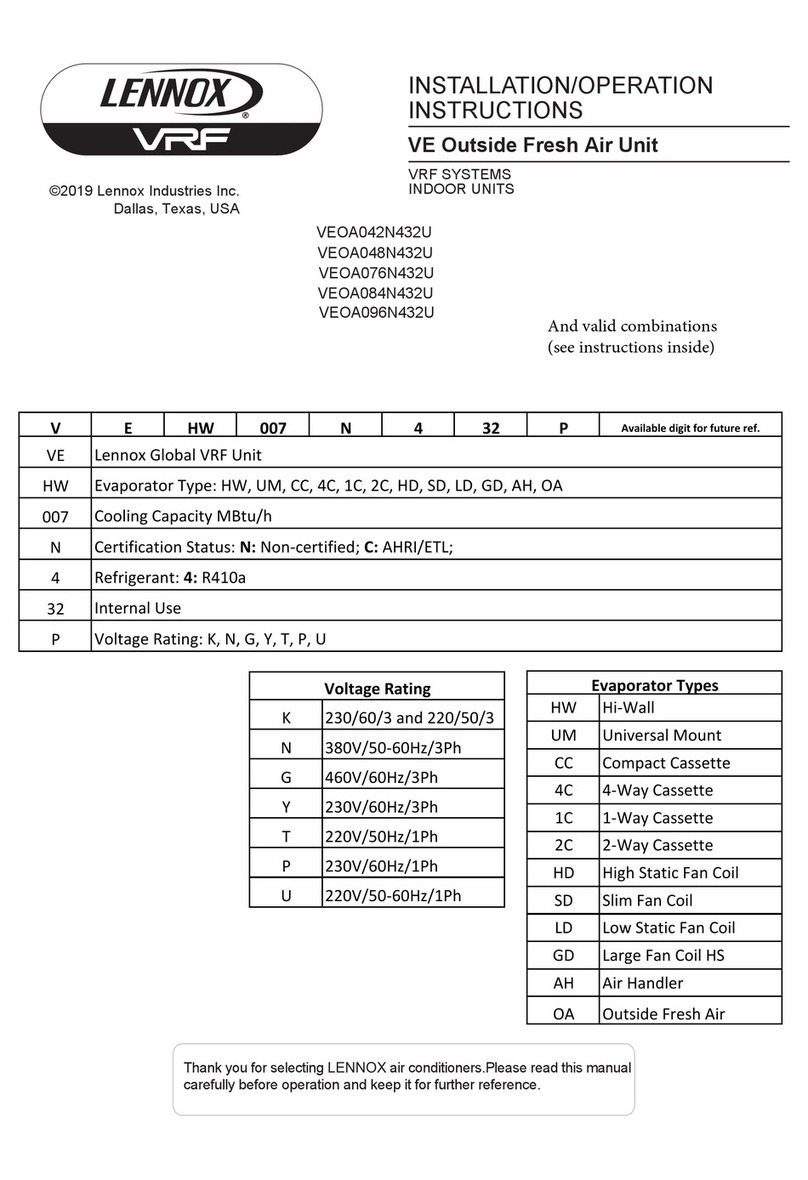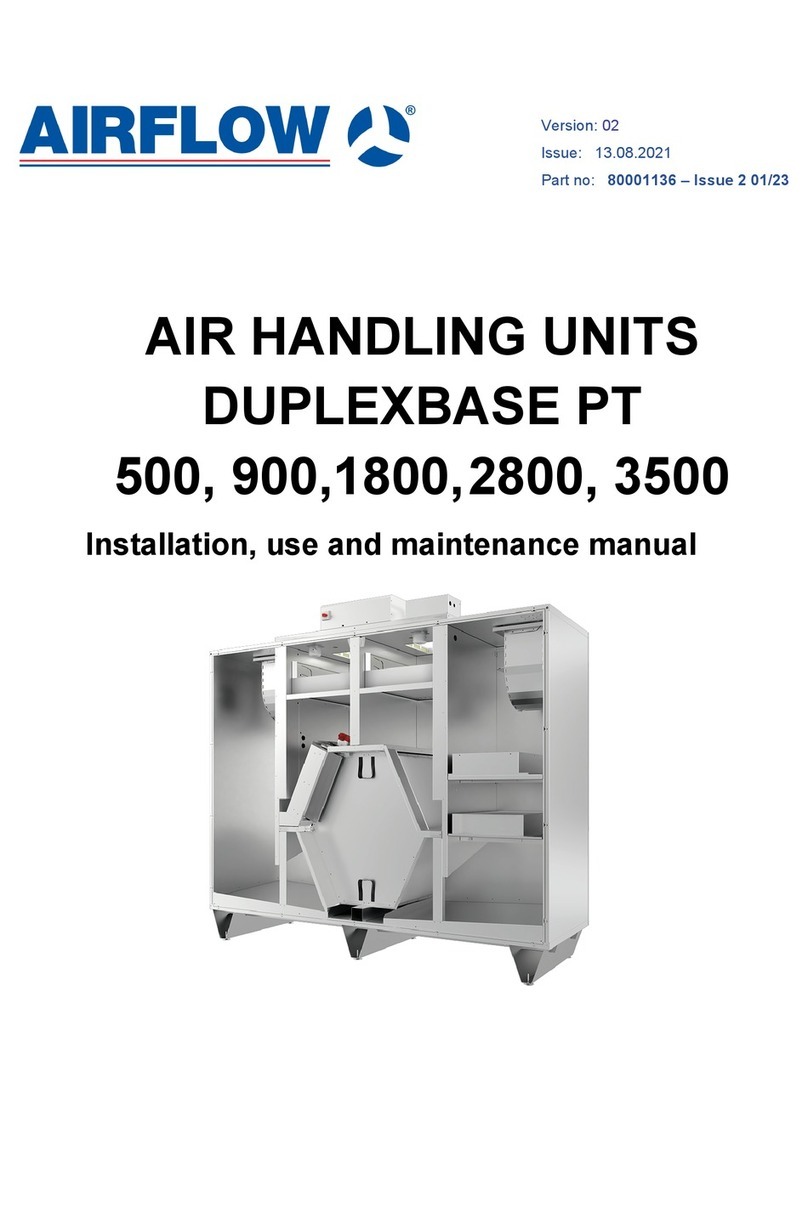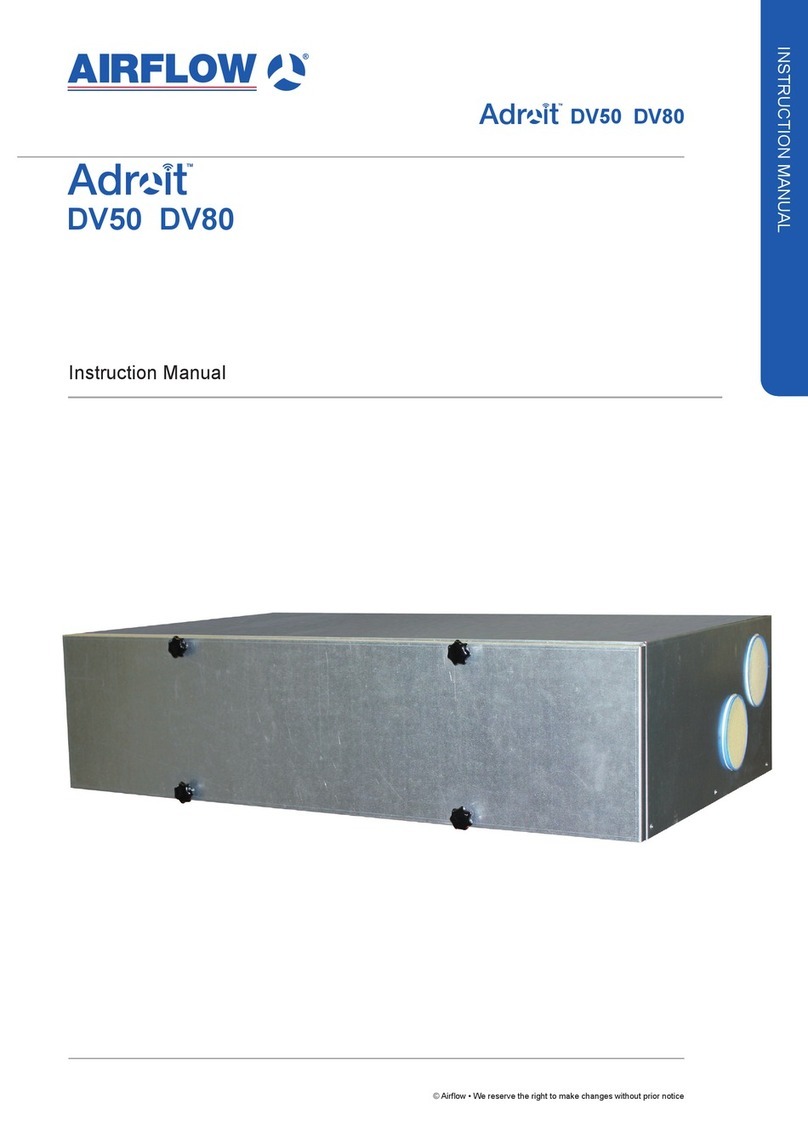
4
1. S a f e t y i n s t r u c t i o n s
1.1. General safety
●Only adults sufficiently familiar with the operation and maintenance manual may operate the
equipment.
●The user must not tamper with or modify any part of the equipment, particularly the power supply
lines!
●Only professional service technicians with relevant qualifications may perform equipment repairs.
Unprofessional repairs are very risky and may result in loss of warranty.
●Before opening the equipment´s door for cleaning, filter replacement or general maintenance
always make sure that the equipment is disconnected from power supply and prevent its
reconnection by another person.
●For rules of connecting air duct please see chapter 4.4.
●If the equipment has been out of operation for a prolonged period of time, extra care should be
taken when putting it back into operation.
1.2. Operational safety
●The indoor version of the unit is intended for a basic environment - ambient temperatures must be
between +5 and + 55 °C with relative humidity up to 60 % (60 % relative humidity up to 20°C). If the
appliance is located elsewhere, its sufficient protection must be ensured. The appliance can only be
operated in an environment where there is no risk of fire or an explosion of flammable gases and
fumes.
●The appliance may be operated within the temperature range of ventilation air between -25 and
+40 °C with relative exhaust air humidity up to 80%. The transported air must not contain
●explosive and flammable gases and fumes;
●organic solvents or aggressive substances that might damage mechanical parts of the unit. If
there is a danger of such gases and fumes temporarily entering the duct system (e.g. during
floor bonding, painting), the unit must be switched off sufficiently in advance.
●In the event of a failure the appliance must be disconnected from power supply as soon as
possible!
●The water chiller in all versions must be filled with an antifreeze solution with sufficient thermal
resistance, or it must be drained for the period during which outdoor temperature might fall below
+3°C. We recommend draining water from the chiller with pressurized air, not using a gravity flow!
●Appliances with hot water heaters
●Must be permanently connected to power supply to provide for the anti-freeze protection of the
hot water heater. In the case of a prolonged power outage the heating medium must be
drained from the hot water heater including the control set. We recommend draining water
from the heater with pressurized air, not using a gravity flow!
●It may only be operated if the heating system including the hot water heater and control set
are filled with a heating medium and air bled; also applies to periods outside the heating
season! In the case when the heating system including the hot water heater and control set
are not filled with a heating medium, the appliance must be drained of the remaining heating
medium, dried properly and disconnected from power supply.
●The appliance is designed for environments with Class ETA 1 extract air; in environments with
extract air Class ETA 2 and ETA 3 it is necessary to comply with conditions specified in the
chapter 4.2.
2. S t o r a g e a nd t r a n s p or t
●The appliance may only be stored in dry, covered places with ambient temperatures between
-25°C and +55 °C in such a way that its surfaces that are to be in contact with transported air
remain protected against the weather and stay dry and clean.
●Packaging may not be removed until immediately before the installation of the appliance in its
operating position. If that is not the case, all parts must be checked for cleanliness before
installation and thoroughly cleaned if necessary.
●The appliance must not contain any operational liquids (e.g. water in the hot water heater, water
chiller etc.) during storage and transport.
